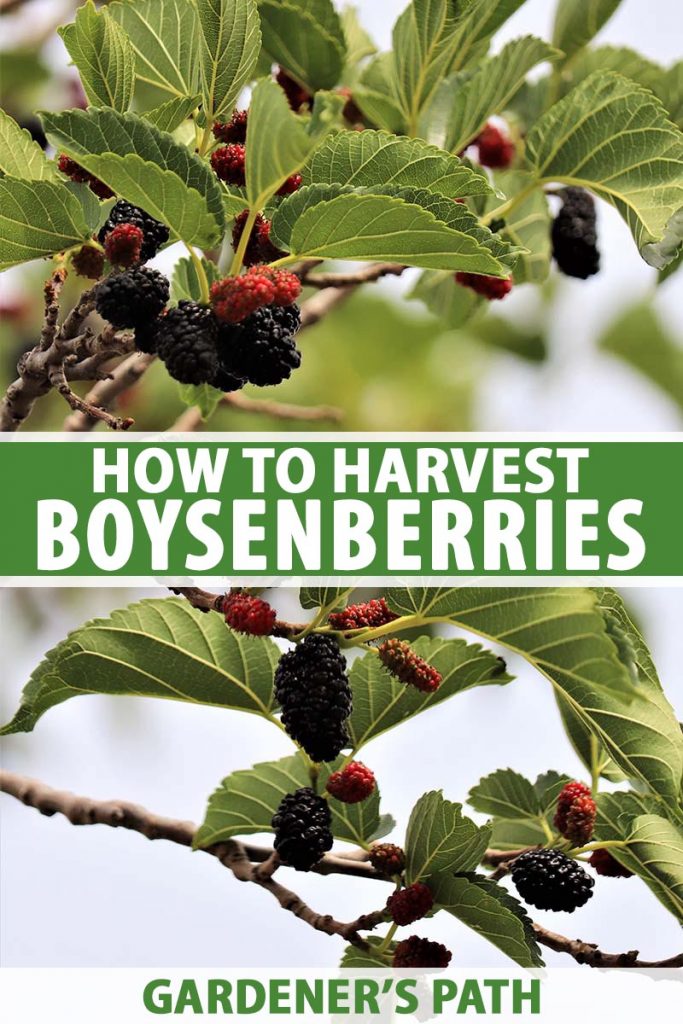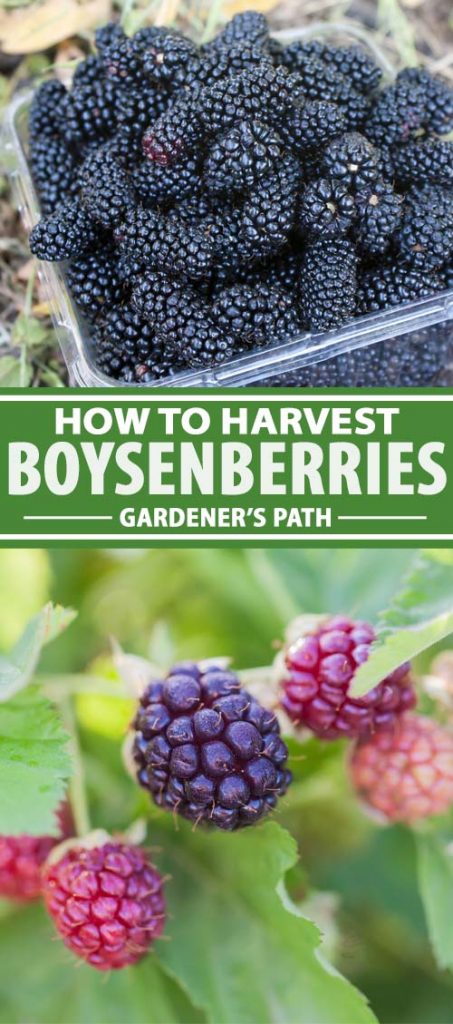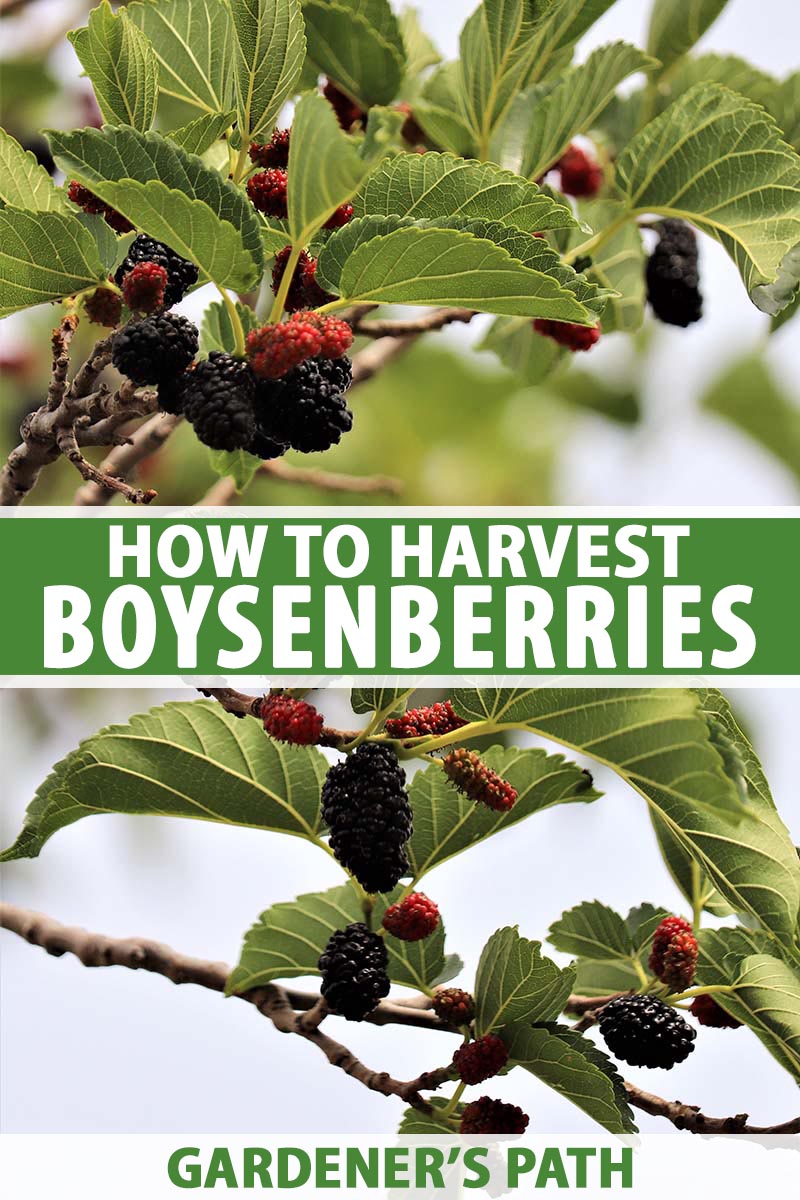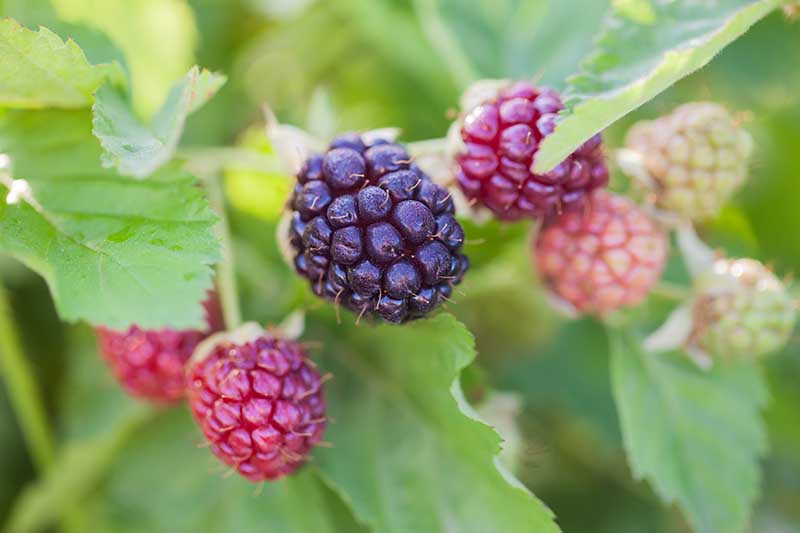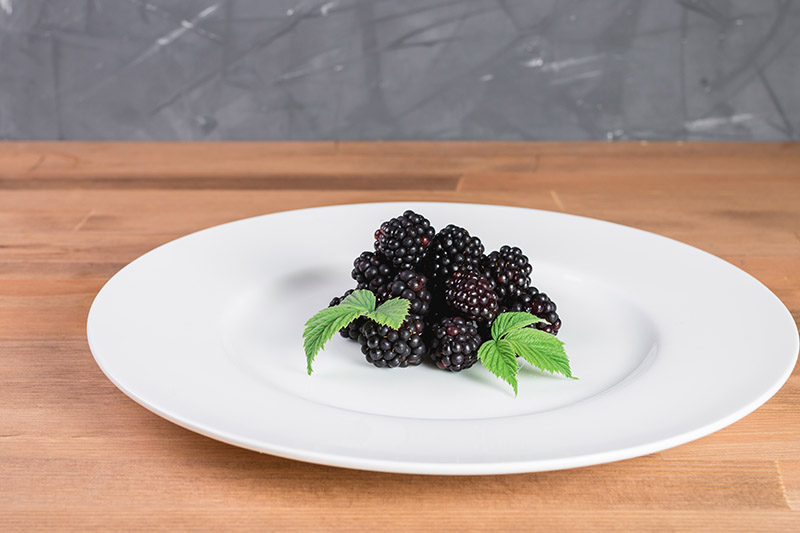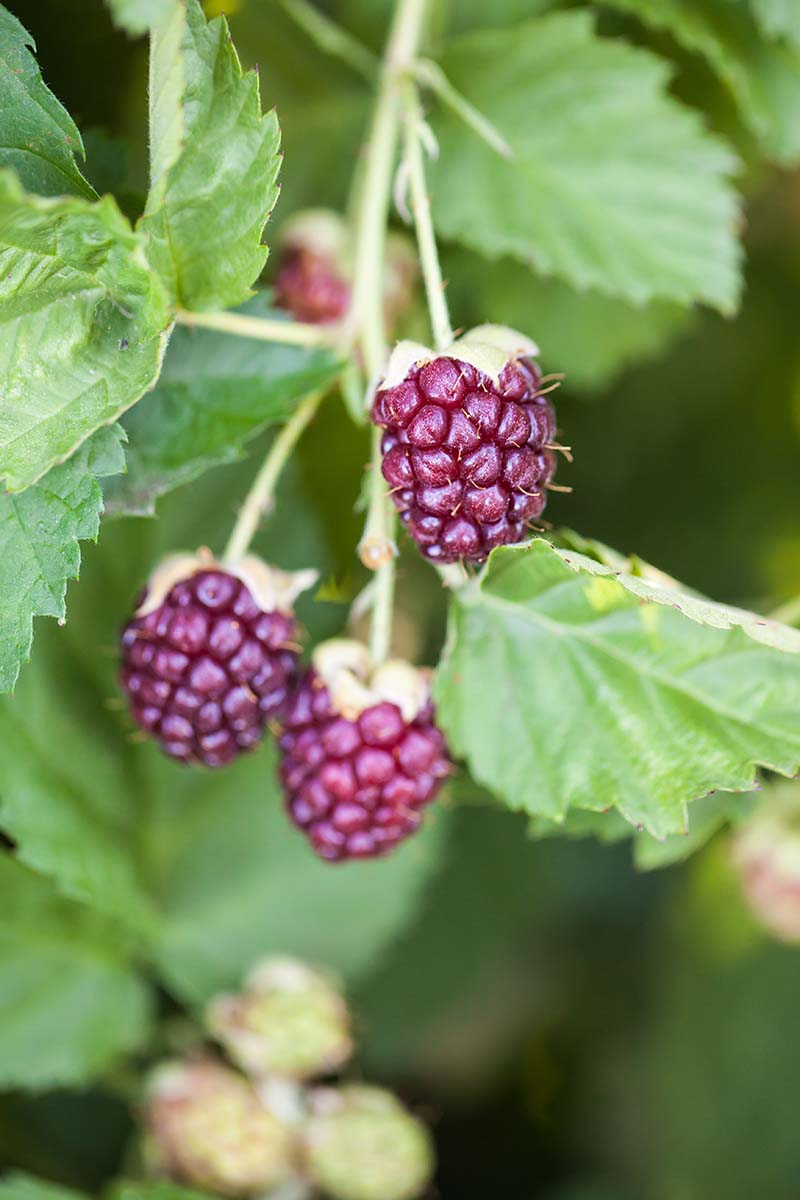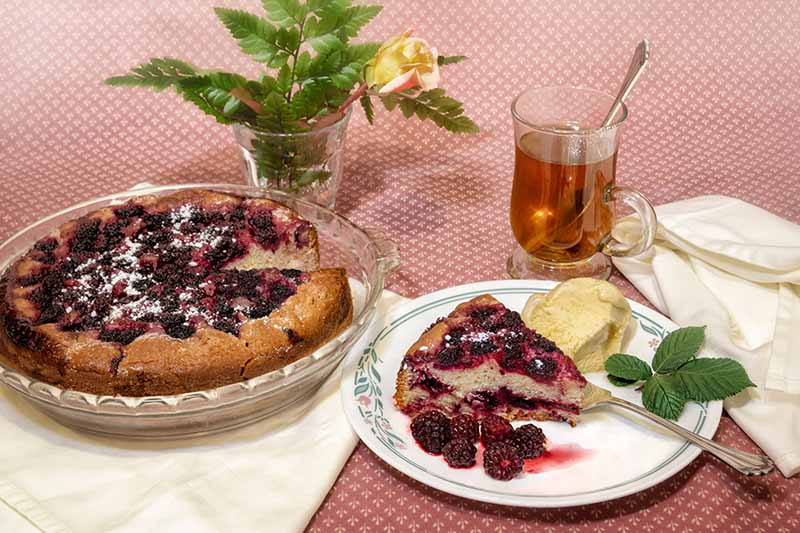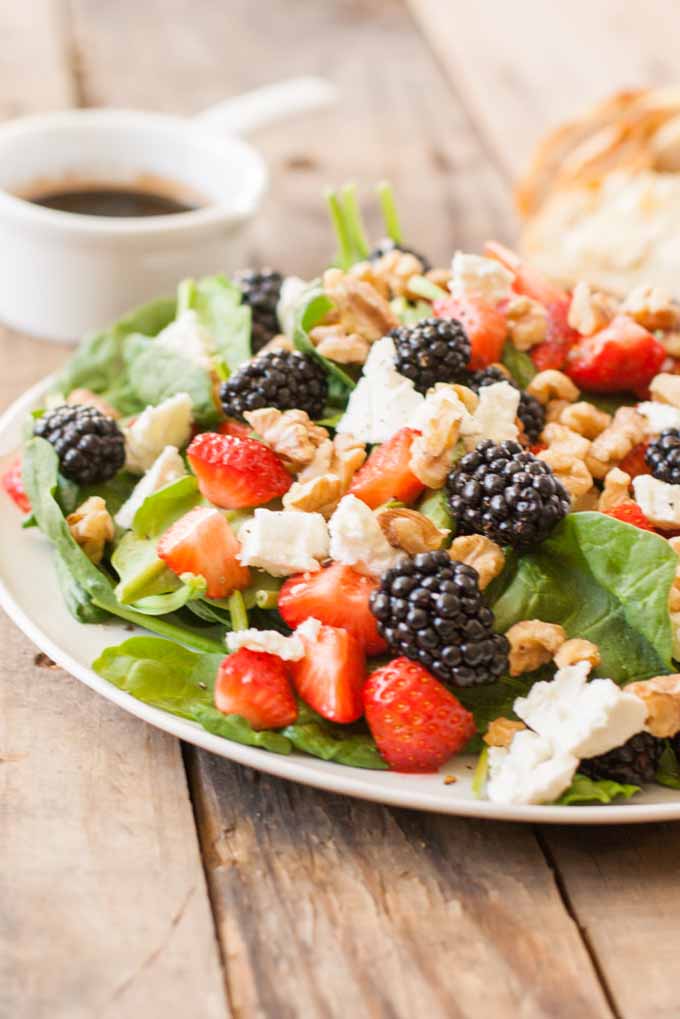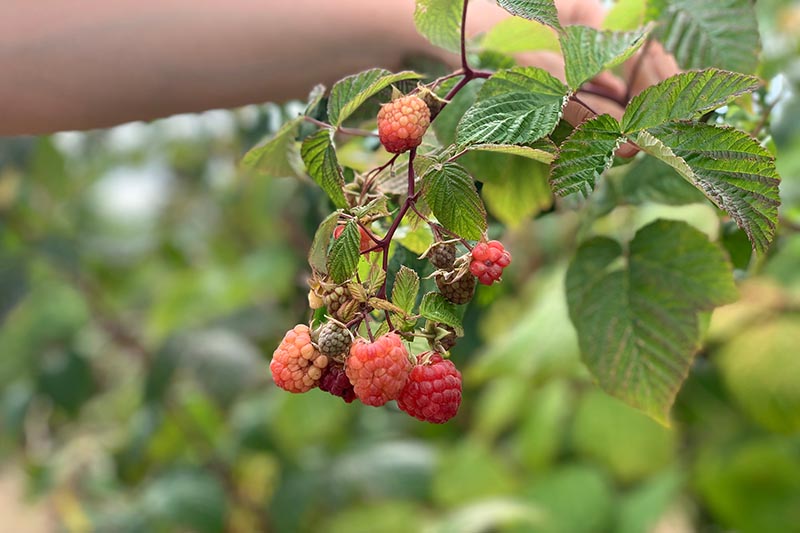At what point are they actually ready? How do you separate the berries from their thorny canes? In this guide, I’ll give you all the answers. We link to vendors to help you find relevant products. If you buy from one of our links, we may earn a commission. Here’s what I’ll cover:
When to Harvest Boysenberries
The first thing to know is that boysenberries, the rare hybrid of blackberries, raspberries, loganberries, and dewberries, produce fruit on floricanes – the second-year growth. They flower in the spring and set fruit that ripens between mid-May and mid-July, depending on your growing zone. Fruit will ripen earlier in hotter zones with more sunshine, and later in colder regions.
The second important thing to realize is that they don’t all ripen at once. Even a clump of berries on the same lateral cane will often be in different stages of maturation: some greenish, many turning red, and a few the luscious dark purple that indicates they are ripe.
For fresh snacking and the best flavor in a scrumptious boysenberry pie, you’ll want to look for the darkest, wine-colored fruits to pick. If you’re planning to turn them into jam, you can get away with picking slightly less ripe berries with a reddish-purple color. The slightly underripe berries will have an excellent tart flavor and a touch of sweetness, which you can improve by adding plenty of sugar in the canning process.
The best time of day to pick these beauties is in the fresh, early morning before the sun gets too hot and makes them soft. Since they’ll ripen over the course of several weeks, I like to make it a habit to wander out into my garden in the morning every couple of days, to check for newly ripe boysenberries. That way, you won’t miss any, nor will you give the birds an opportunity to get there first.
How to Harvest
If you trained your vines along a trellis or wire, you’re going to have a much easier time picking the berries than if you allowed the plants to spread out. They’ll be hanging right there for you to grab and you won’t have to sort through thorny vines.
But if you didn’t train your boysenberries on a trellis, that’s okay too. You’ll just need to make sure you have a pair of gardening gloves and maybe a long-sleeved shirt come picking time, so that your hands and arms don’t get scratched by the thorns. You’ll also want a colander or a plastic container to collect the berries. It’s best if the container is the same one where you will keep the fruit after picking and until you eat it fresh, make some jam, or bake it into a pie.
Boysenberries are notoriously juicy and thin-skinned, so moving them from container to container can damage them, which will cause them to spoil quicker than they already do – usually within three days from picking time. And you’ll need to keep them in the refrigerator in a covered container to keep them fresh for that long. Now that you’re ready to pick, here’s how you do it: Grasp the berry with your fingers and gently pull straight down. It should easily come off the vine.
Like blackberries, these have a core in the middle, which breaks off from the plant. This is different from raspberries, where the entire core comes out when you pick. While you may be tempted to rinse the berries, don’t! Unless you’re going to eat them right away for breakfast, of course. You’ll want to wash them just before use so they don’t get bruised or waterlogged, which will make them more susceptible to quick decay. That’s all there is to it!
Now you’re ready to make a boysenberry pie, cake, or tart to enjoy for breakfast or dessert. Or, lay them out on a wax paper-lined baking sheet to freeze. Once frozen, transfer them to a lidded container or zip-top baggie to freeze and enjoy within six months. You can learn more about how to store your fresh harvest of seasonal berries over at our sister site, Foodal.
Recipes and Cooking Ideas
There is so much you can do with your fresh boysenberries. You can use them as a substitute in any recipe that calls for blackberries – or even raspberries. Why not try a fresh summer salad with berries, spinach, and walnuts? You can find the recipe over at Foodal. Or, try a delicious fresh berry compote, perfect for dessert – or for a burst of fruit flavor in your morning oatmeal?
A Joy to Pick and Eat
There’s nothing quite like the meditative, rewarding work of picking berries off your own vines. Enjoy every moment of harvest time, because it won’t come again for an entire year.
During those fall and winter months, you can dream of boysenberries and look forward to seeing the small white blossoms pop up in the spring, promising plump, juicy, nutritious goodness for your hungry belly. Have you grown and harvested boysenberries? Let us know in the comments below and feel free to share your favorite recipes! Don’t forget to check out our guide to growing boysenberries for more tips. And for more information about growing delicious berries in your garden, check out the following guides next:
How to Plant and Grow Ground Cherry, a Tasty, Tropical Berry How to Grow Raspberries: Enjoy Berries for Years to Come How to Grow Elderberries
© Ask the Experts, LLC. ALL RIGHTS RESERVED. See our TOS for more details. Uncredited photos: Shutterstock.
